
I bought a Lomi!
You know, those cute little countertop composters that everyone is reviewing and that keep popping up in your social media ads.
As I am an actual gardener with an actual garden who actually composts, I figured I’d better give this thing a look.
I was pretty excited to try out the Lomi, not to mention silently kicking myself for waiting until after I had moved out of my apartment to do it. I made several attempts at composting in my apartment over the years, including the Bokashi method. All of them ended up with copious amounts of fruit flies and the neighbors making comments about a funny smell in the building.
The thought of an apartment-friendly composter appeals to me, even if I’m no longer living in one.
What Is the Lomi and What Is it Supposed to Do?
The Lomi Smart Waste Kitchen Composter is just that – a small(ish) kitchen appliance designed to compost your kitchen waste that would otherwise go out in the trash.
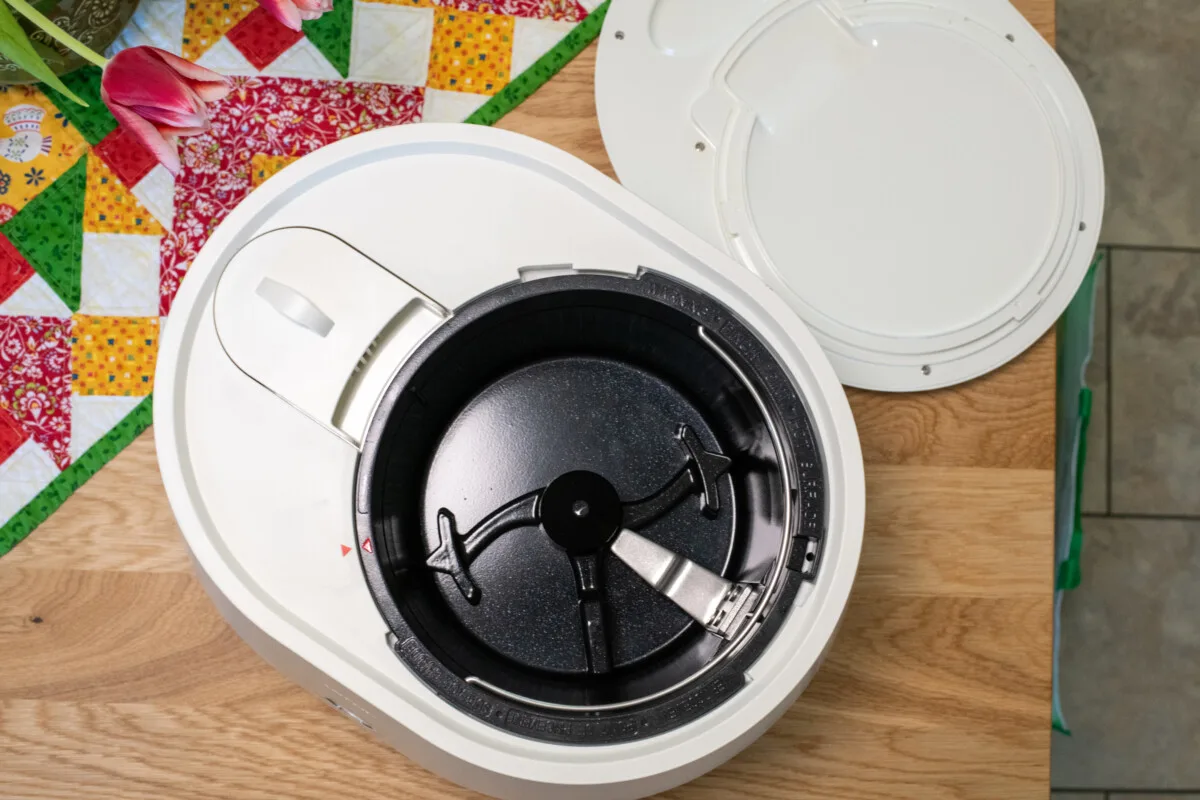
The machine uses heat, a fan, mechanical abrasion (a grinder) and a “proprietary microbial and bacterial blend” via small tablets called LomiPods to break down kitchen scraps into “Lomi earth.” You can use the resulting byproduct like you would compost or put it in your green bin.
The idea is to cut down on food waste that goes in the trash.
Let’s Get Straight to It
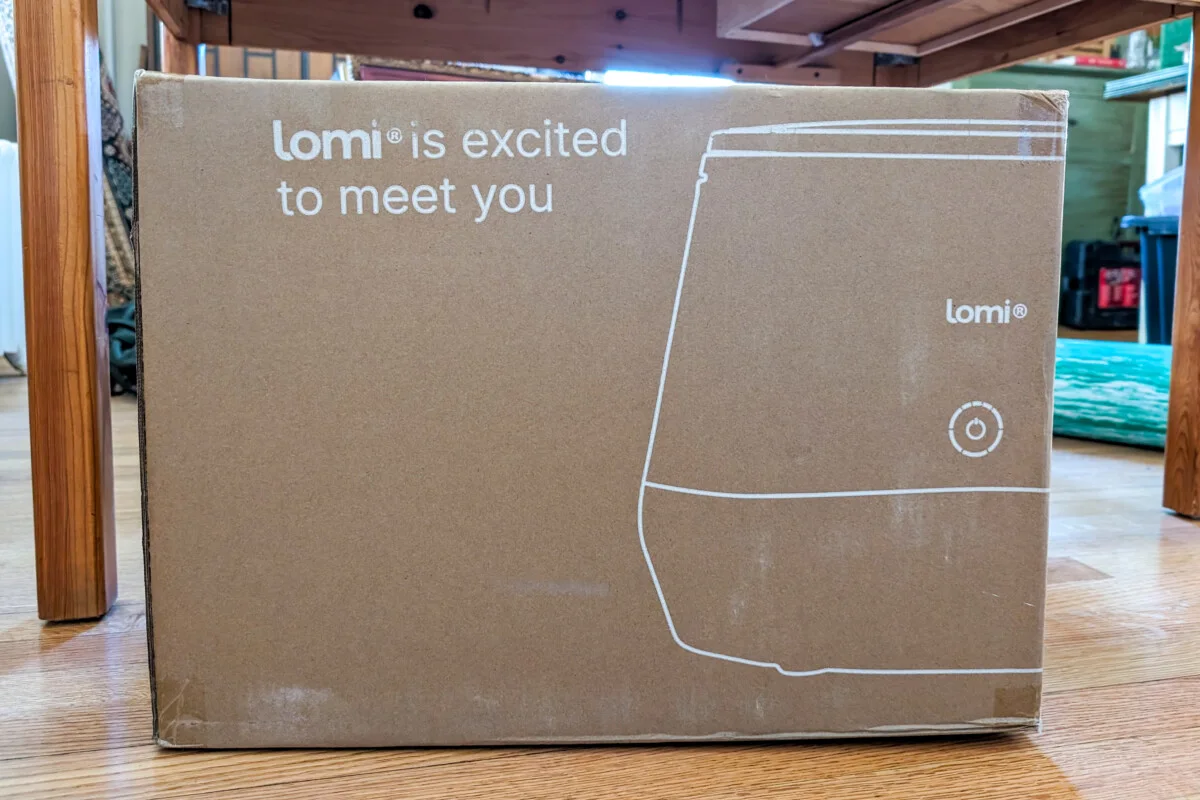
Longtime Rural Sprout readers know I’m not a gadget person. (Despite my sweetheart’s best efforts.) I don’t recommend products only to add a few more links to Amazon in my articles. If there is a link to a product, it’s because I use it myself and would recommend it to family and friends, as well as you, dear readers.
You can rest assured my recommendations are genuine.
With that said, when it comes to the Lomi composter – save your money; it’s not worth it, in my opinion.
Does it cut down on food waste? Yes, absolutely. It does what it says it does.
But at the end of the day, there were too many disappointments to equal a net positive for me. I used the Lomi for several weeks before I decided to return it. Lomi gets a lot right with this device, but there’s still quite a bit of room for improvement before I would consider trying it again.
My Lomi Experience
I ordered the Lomi Classic, which was around $350.
We’ll start with the packaging. I was impressed by the minimal packaging, all of which was compostable, right down to the bioplastic bag that protected it inside the box.
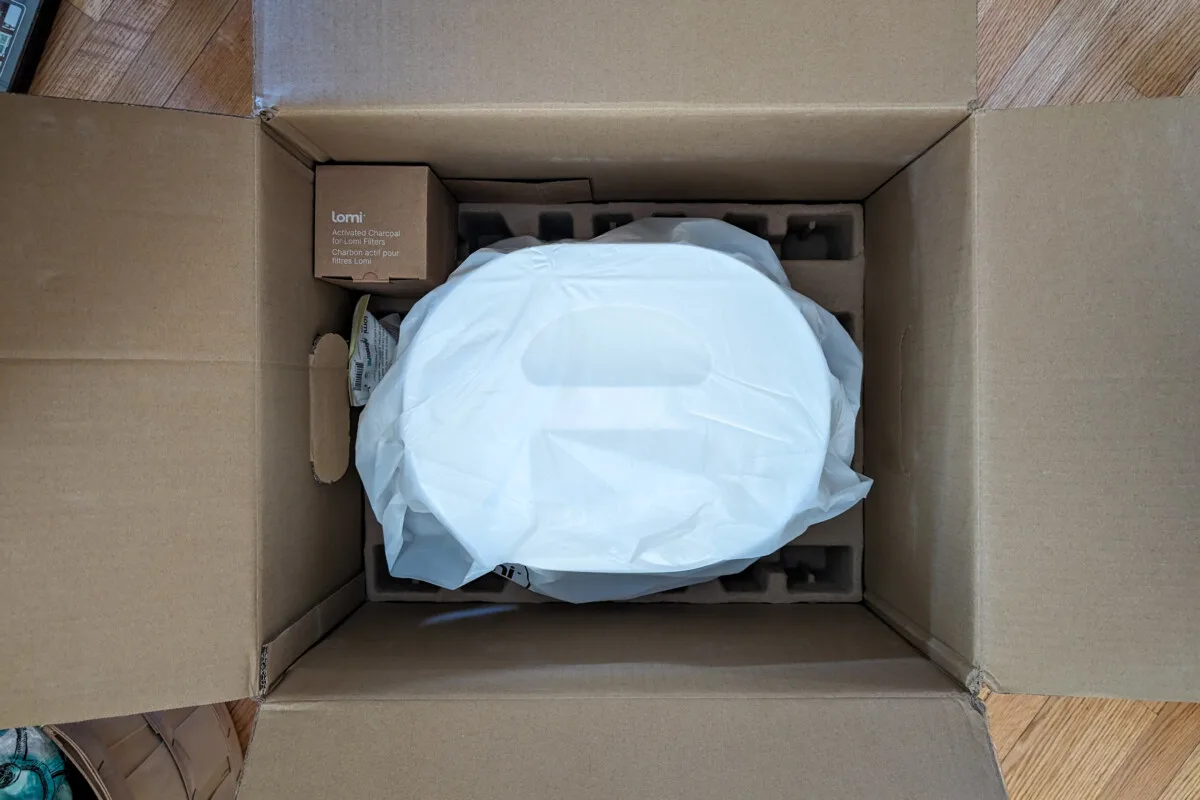
I would expect nothing less from a company selling a product designed to reduce waste.
The design is sleek and meant to fit with any décor, which it does. It’s cute, even. But countertop? Hoo baby, this thing takes up some real estate. For comparison, it takes up about as much room as a 6-slice toaster oven. If you plan on keeping this on your counter, then I hope you have a huge kitchen.
Its bulk meant my Lomi was going on the floor where there was a little more room.
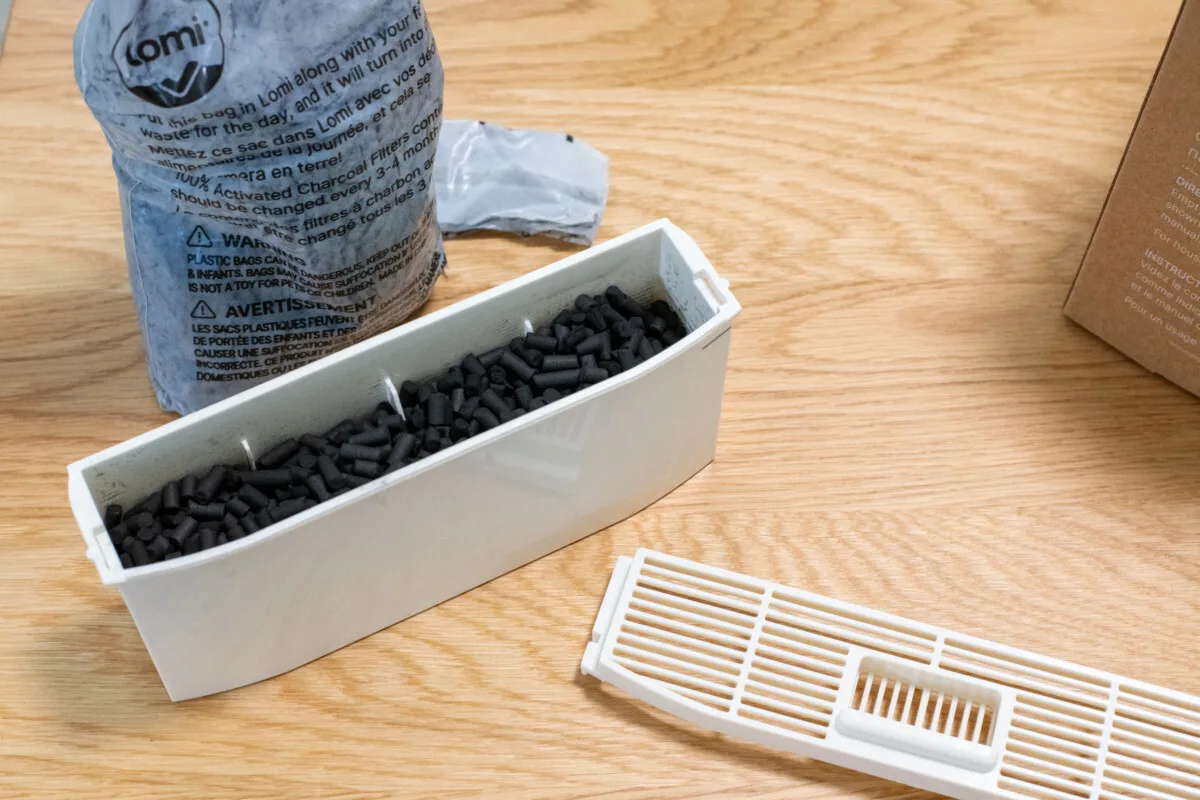
The manual gave clear directions, and I was up and running in minutes. It was easy to set up the filters with the activated charcoal. The different cycles were explained, as well as what you can and can’t put in a Lomi to break down. (The list of what you can put in your Lomi is quite impressive.)
The First Cycle
Lucky me, I had my small compost bucket filled with scraps just waiting to be processed by this newfangled device. I opted to do the longest cycle first, which requires you to use a LomiPod (little tablets filled with microbes). It takes roughly 20 hours to complete.
I had a decent mix of greens and browns in my bucket, so I figured it would be a good first go.
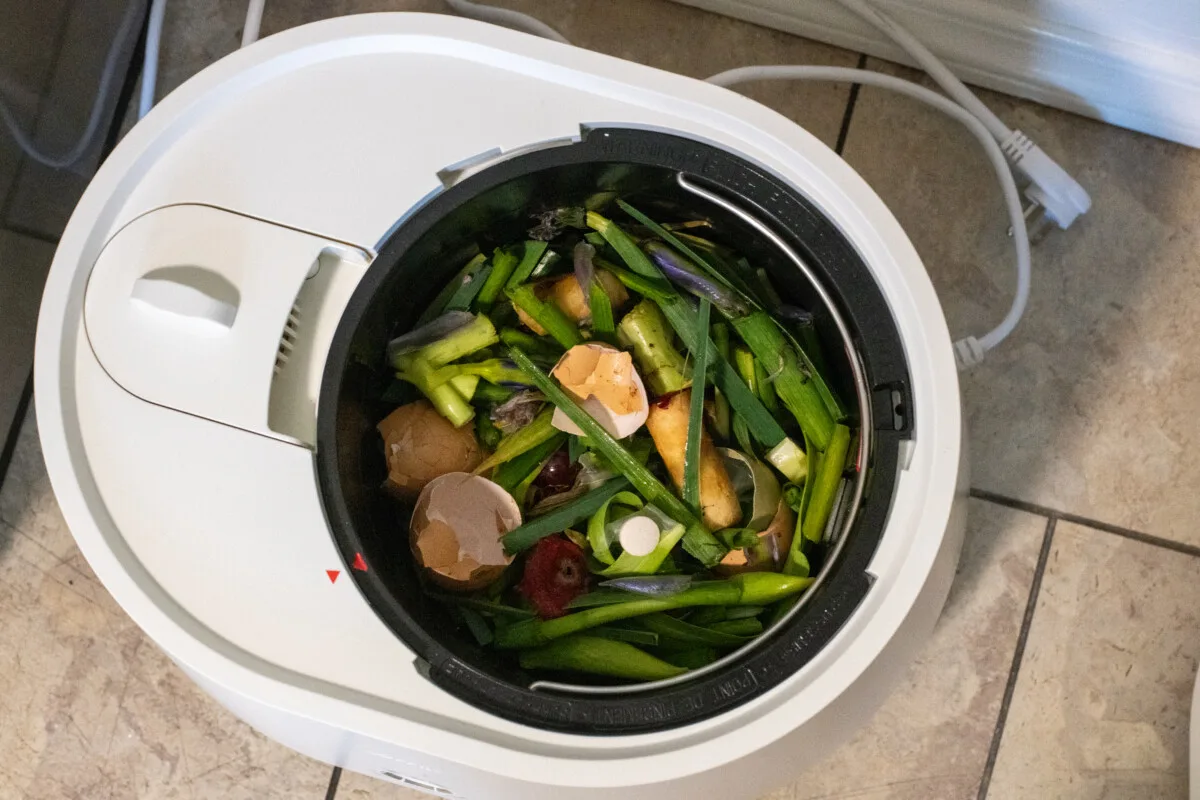
The manual advises that you keep the composter at least six inches away from the wall, so that meant it took up even more room, even on the floor. But once it started going, I could see why you want it away from the wall – it puts out a lot of humid air. A long cycle or two and you could easily peel your wallpaper. (We’ll return to this issue later.)
I noticed the machine is quite noisy for what it is.
The Lomi website compares the noise to a fridge or dishwasher running. What? I hope your refrigerator isn’t as noisy as your dishwasher. But that disparity aside, no, the Lomi is not as quiet as a dishwasher. It’s louder, and it grunts and groans as it works.
Depending on what you put in it, the composter will creak or make grinding noises periodically.
When I went to bed, it was like I left the fan above the stove on, and a small, angry rodent was foraging in my kitchen all night.
But hey, I thought, I’ll wake up to compost in the morning! And I did. Sort of. What I found was not what I was expecting. As a gardener, when you tell me something makes compost, I’m expecting to find a moist mixture of broken-down organic material. This was dry and crumbly; it looked more like something that had come out of my dehydrator.
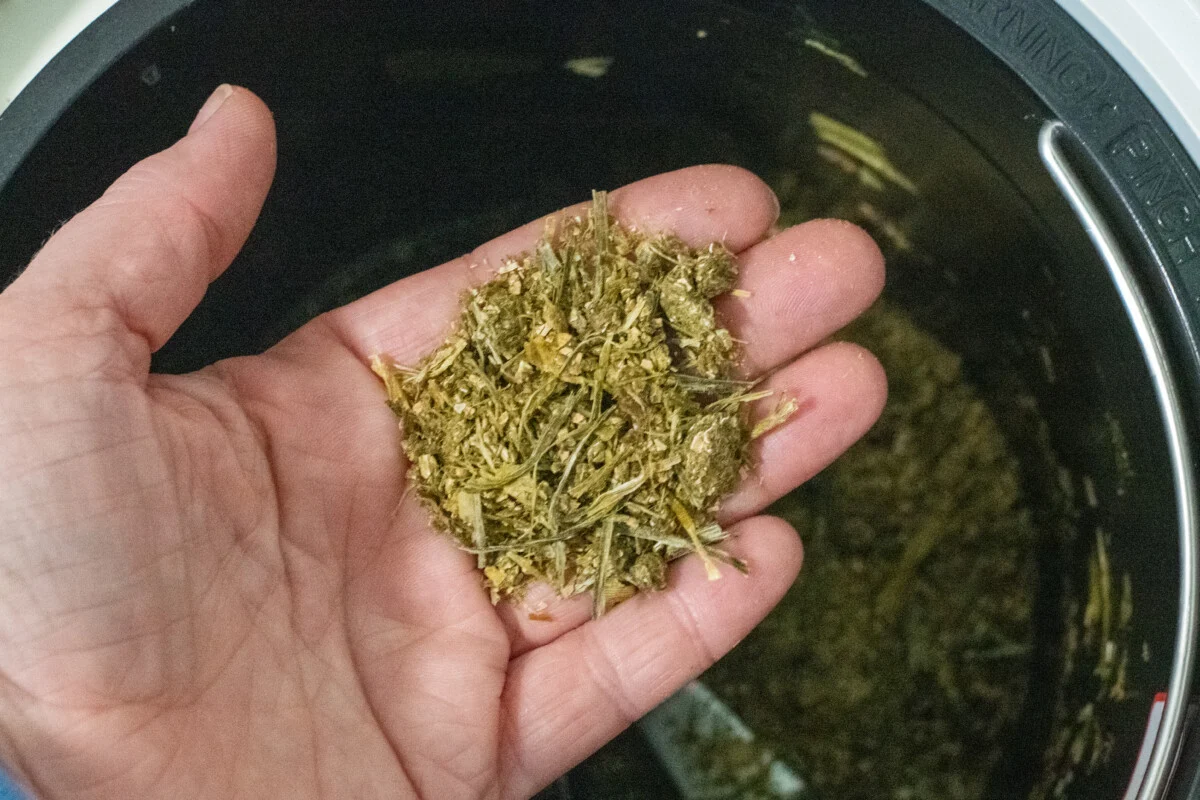
But I was ready to fertilize my plants! And it had the bonus of added microbes from the LomiPod. I decided to use it to top-dress a few of my houseplants and then ran the bucket through the dishwasher as directed.
Okay, so it’s a little noisy, so the finished product isn’t exactly what I was expecting, but it works! I could get used to this. So, I kept using it.
And That’s When Things Started to Go Downhill
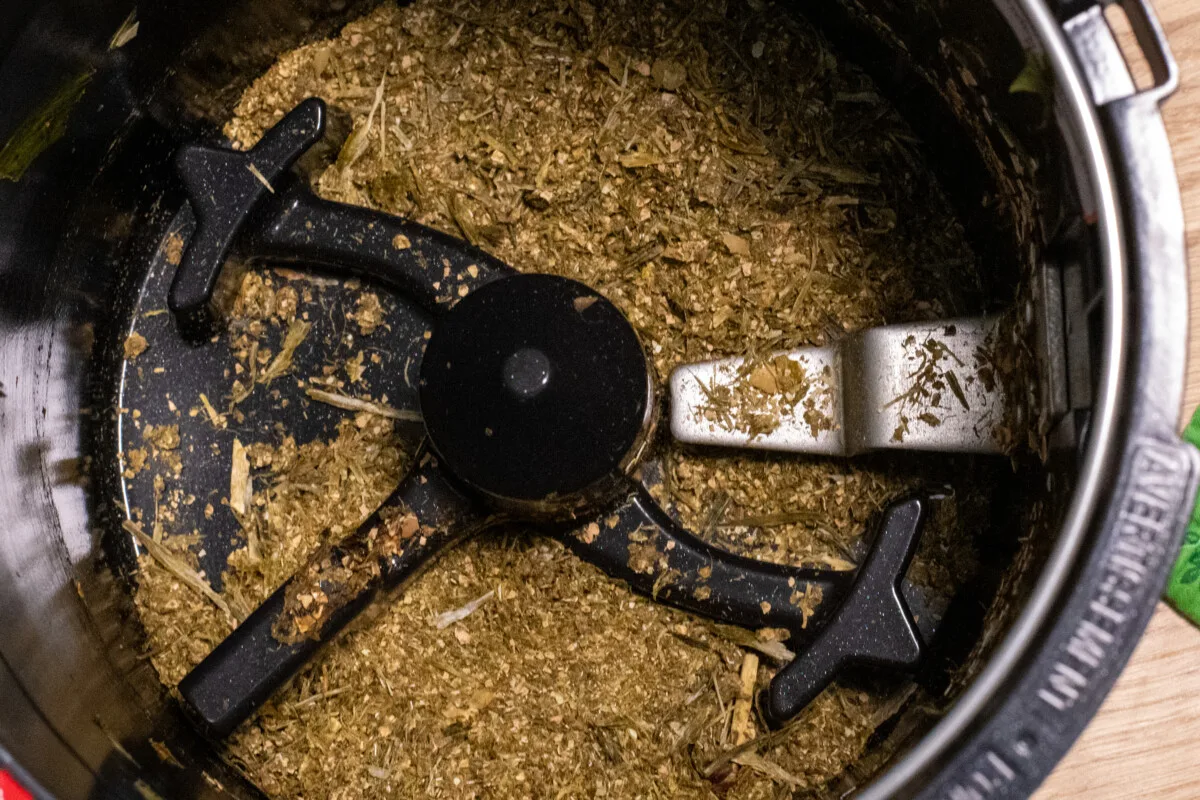
Even when washing the bucket after each use and brand-new filters, the Lomi smells. It makes sense: you’re breaking down food scraps with a machine that heats them and exhausts the hot air. If your food scraps are already starting to decay, yeah, it’s not going to smell great. To add to the fun, the smell also depends on what you put in it. Any kind of brassica is a real treat.
I was running the quick cycle one morning with some cauliflower scraps among the greens. My 14-year-old came into the kitchen and said, “What smells like alien feet?”
I made the mistake of running the longest cycle on a rainy day. Hoo boy. The smell was unreal. The smell seems to be one of the biggest complaints among users, which isn’t great if this is meant to hang out in your kitchen. That’s why I moved mine to the laundry room.
I thought I had found the perfect solution – I wouldn’t have to smell it or listen to it grinding away for hours on end.
A New Problem Emerges
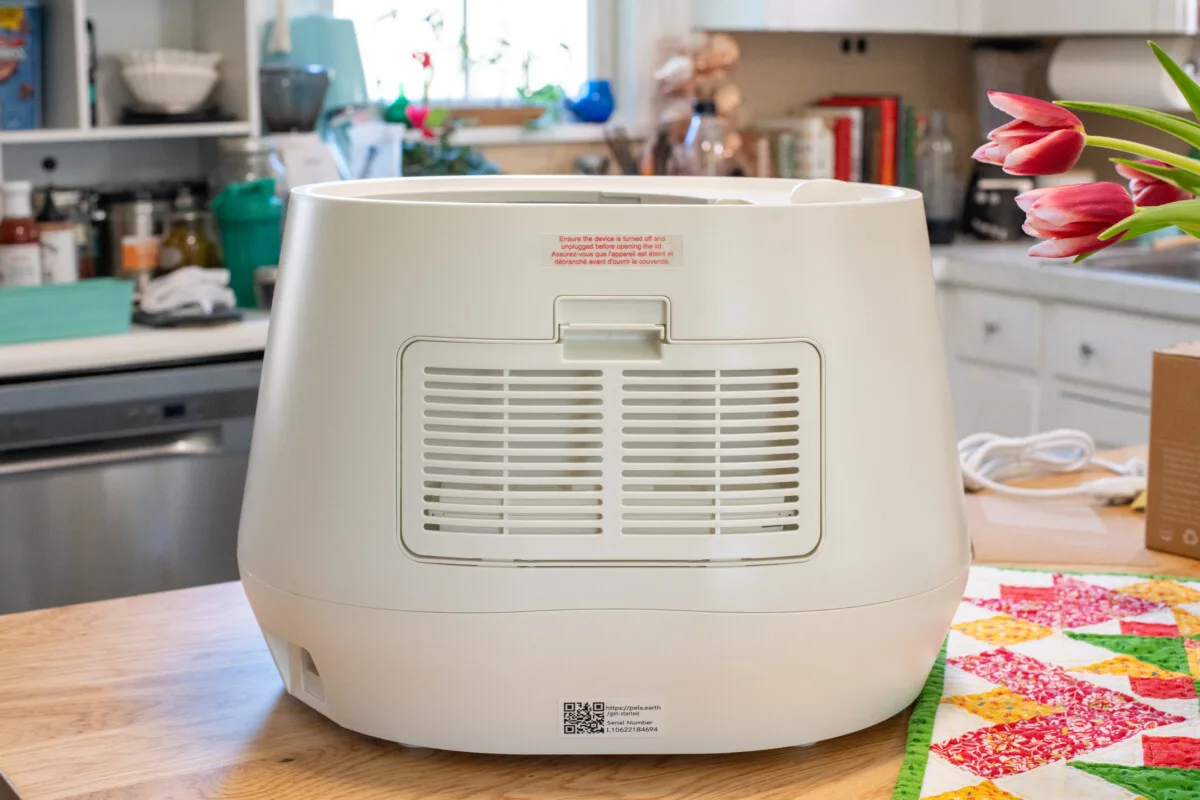
Unfortunately, it only helped with the noise and caused a new problem. Remember the humid air it puts out? If it’s in a small space, moisture becomes an issue fast. My laundry room was as humid as a jungle, and you could still smell it in the kitchen.
The Deal Breaker
Around two weeks in, I was having serious doubts about whether or not this thing was worth it. I wasn’t using it as often because I didn’t want to listen to or smell it.
It was around this time that I started noticing fungus gnats around the house.
Now, as a houseplant owner, I am a notorious underwaterer. My plants are much more likely to die of thirst than being overwatered. So, I found it odd that I was seeing fungus gnats. I decided to check my plants and see what was up. That’s when I found my favorite African violet with rusty, wilting leaves.
Beneath its leaves, the Lomi earth I had used to top dress the plant was covered in a thick layer of mold, and the stem of my plant was rotting.
It took me two years to grow that thing from a leaf cutting I bought on eBay.
It turns out that drying kitchen scraps and grinding them into powder is just that – dehydrated kitchen scraps. When you add water (like when watering your plants), you rehydrate everything because it isn’t broken down the way compost is.
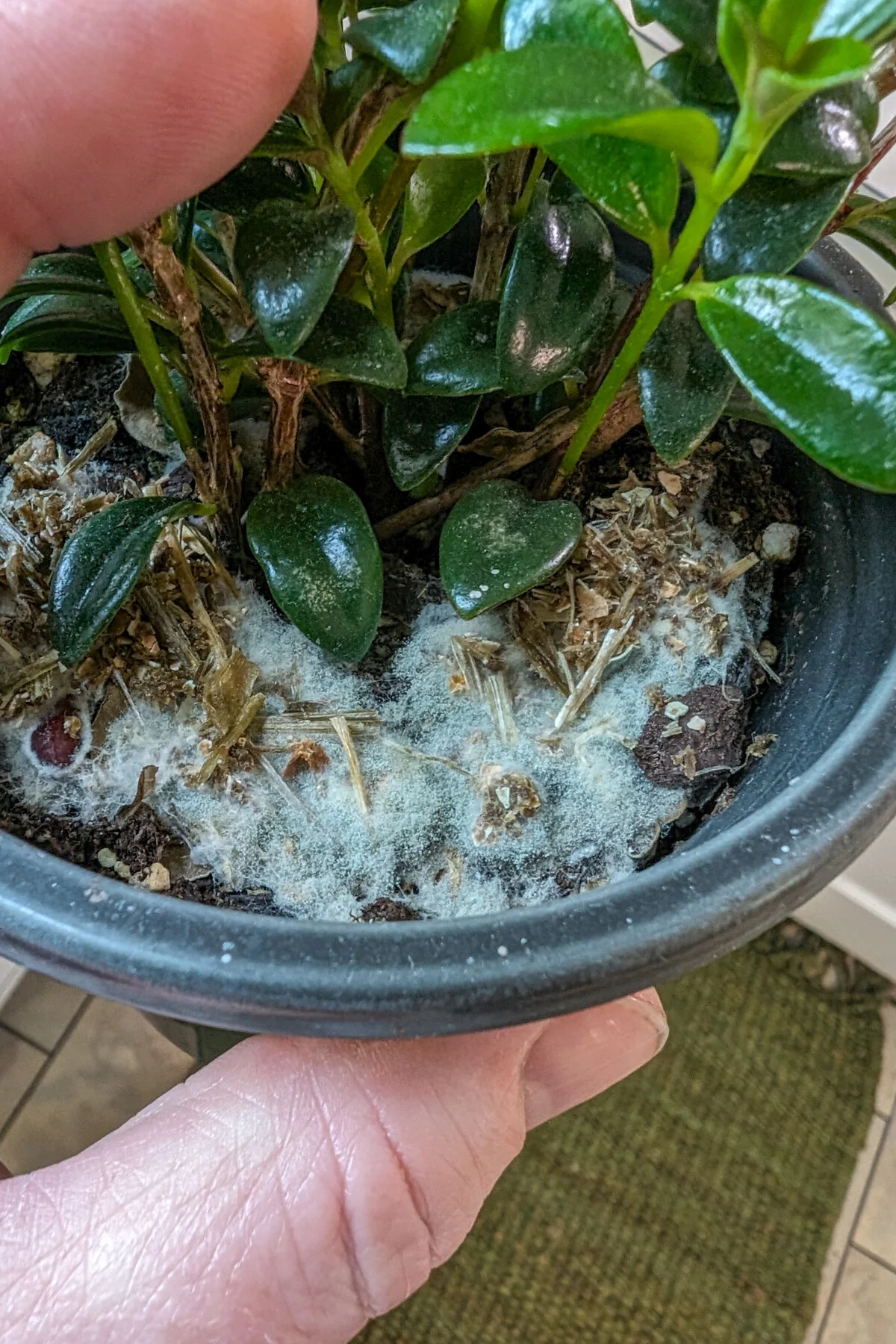
All the plants I top-dressed with Lomi earth had a thick layer of rotting fuzz on top of the potting soil. That’s when I decided to start a return.
From the beginning, I was skeptical that the Lomi could actually compost kitchen scraps in such a short amount of time.
Composting is an aerobic process that involves a whole host of naturally occurring microbes that slowly break down organic matter.
Making compost takes time, as any experienced gardener will tell you. The conditions need to be right for good compost, even with the speeded-up Berkeley method. That means the right mix of greens, browns, heat, moisture, microbes and time.
If you’re only looking to reduce your food waste and you don’t mind the smell and noise, then maybe the Lomi is for you. For me, I don’t think it’s worth it.

Get the famous Rural Sprout newsletter delivered to your inbox.
Including Sunday ramblings from our editor, Tracey, as well as “What’s Up Wednesday” our roundup of what’s in season and new article updates and alerts.


